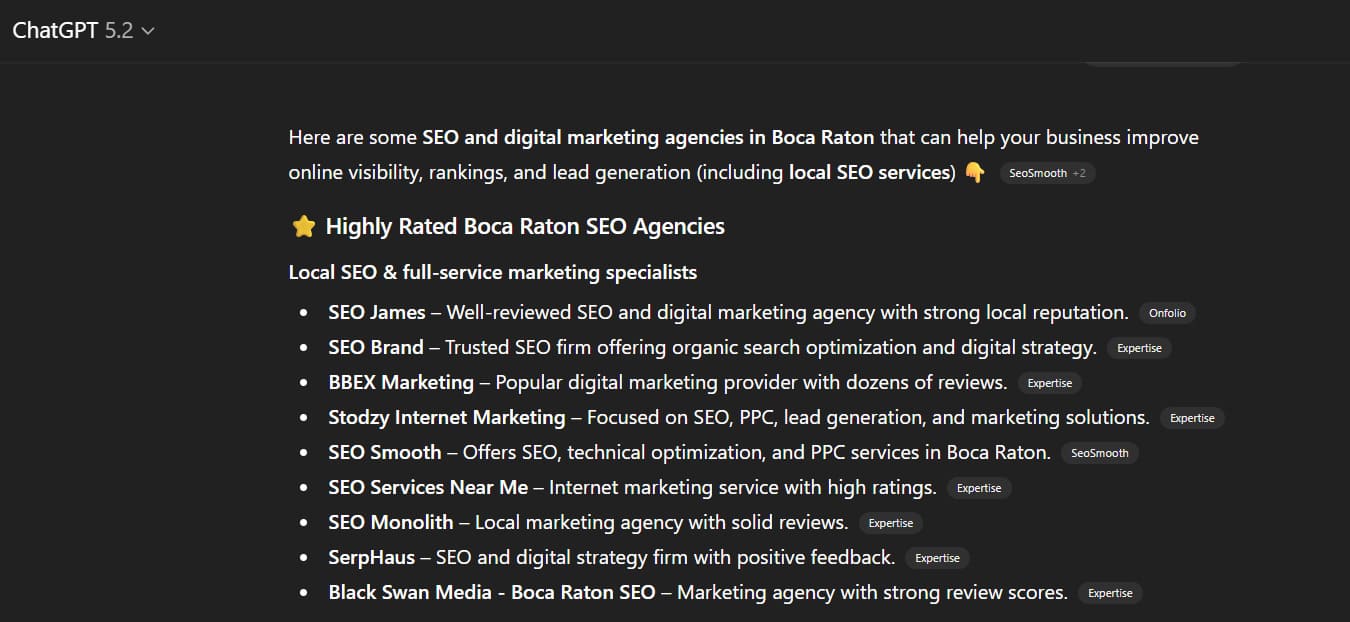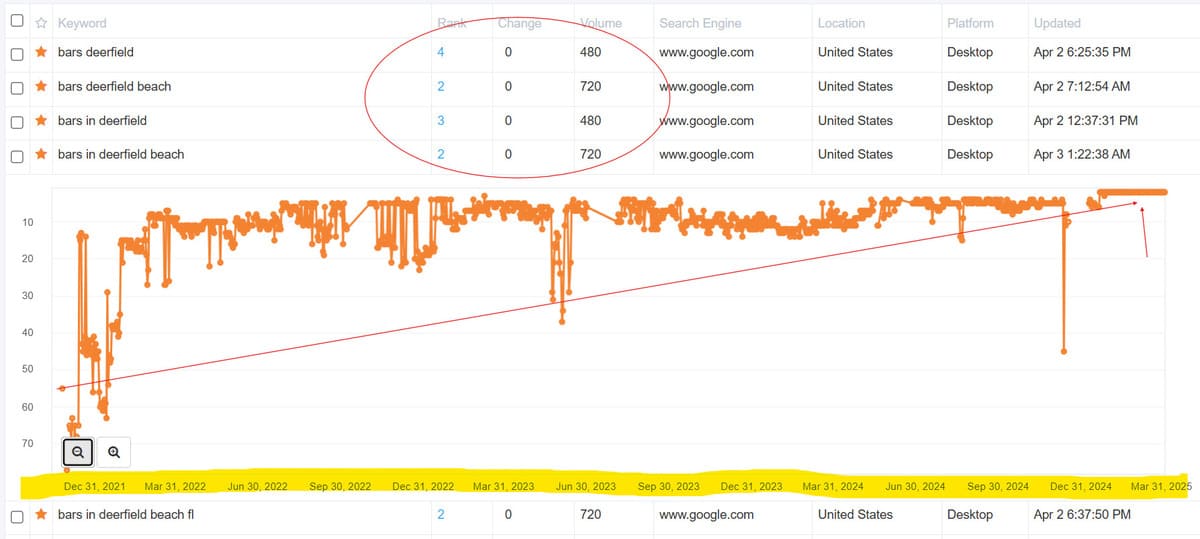Yes — AI is now a powerful tool for Search Engine Optimization (SEO), used by both experts and businesses to gain a competitive edge on Google and other search engines.
 Ways AI Is Used in SEO
Ways AI Is Used in SEO
1.  Keyword Research
Keyword Research
AI can:
- Find high-volume, low-competition keywords faster
- Analyze search intent (e.g., informational vs. transactional)
- Group keywords by topic clusters for better content strategy
Tools: ChatGPT, SEMrush, Ahrefs, Surfer SEO, Clearscope
2.  Content Generation & Optimization
Content Generation & Optimization
AI helps create:
- Blog outlines, product descriptions, or FAQs
- SEO-optimized titles and meta descriptions
- Content that naturally includes keywords, LSI terms, and semantic variations
- Suggestions to improve readability, structure, and engagement
Popular tools: ChatGPT, Jasper, Surfer, Grammarly, MarketMuse
3.  Competitor Analysis
Competitor Analysis
AI tools can:
- Analyze what top-ranking pages are doing right
- Compare backlinks, word count, load speed, keyword density, and page structure
4.  Technical SEO Audits
Technical SEO Audits
AI-driven crawlers can:
- Identify broken links, duplicate content, slow-loading pages, indexing issues, and schema errors
- Prioritize technical fixes by potential SEO impact
Tools: Screaming Frog, Sitebulb, SEMrush Audit Tool
5.  Backlink Analysis & Outreach
Backlink Analysis & Outreach
AI can:
- Find relevant, high-authority sites to target for backlinks
- Write personalized outreach emails or guest post pitches
- Monitor new and lost backlinks
6.  Search Trend Prediction
Search Trend Prediction
Using machine learning, AI can:
- Detect emerging topics before they peak
- Help you publish content that’s ahead of the curve
7.  A/B Testing and Performance Insights
A/B Testing and Performance Insights
AI helps test:
- Which headlines rank or convert best
- How users interact with pages (via heatmaps, bounce rates, etc.)
 Caveats of AI in SEO
Caveats of AI in SEO
- AI needs human oversight: Content still needs fact-checking, original insight, and emotional intelligence.
- Overuse of automation (e.g., keyword stuffing or low-value content) can trigger Google penalties.
- Google’s algorithms now prioritize E-E-A-T (Experience, Expertise, Authoritativeness, Trustworthiness), so authentic content matters.
- SEO is dynamic: Algorithms change, so AI tools must be paired with strategy.
 Summary Table
Summary Table
| SEO Task | How AI Helps |
|---|---|
| Keyword Research | Finds intent-rich, competitive keywords |
| Content Writing | Generates outlines, drafts, meta tags |
| Optimization | Improves on-page SEO, internal linking |
| Technical SEO | Automates audits and issue detection |
| Backlink Outreach | Identifies targets and personalizes pitches |
| Competitor Analysis | Breaks down what makes others rank |
| Trend Discovery | Spots future search demand early |
If you’d like, I can recommend specific AI tools for your goals or even help you build an AI-powered SEO workflow for your site. Just let me know!
An AI-powered SEO workflow is a structured process that uses artificial intelligence tools and automations to research, plan, create, optimize, and track SEO content — all faster and more efficiently than traditional manual methods.
 Why Use AI in Your SEO Workflow?
Why Use AI in Your SEO Workflow?
- Save time on repetitive tasks
- Find better keyword opportunities
- Create more optimized content
- Identify technical issues faster
- Stay ahead of trends and competitors
 Typical AI-Powered SEO Workflow (Step-by-Step)
Typical AI-Powered SEO Workflow (Step-by-Step)
| Step | Task | AI Tools/Usage |
|---|---|---|
 | Keyword & Topic Research | Use AI to find high-value keywords based on search volume, intent, and competition.  Tools: ChatGPT, SEMrush, Ahrefs, Surfer SEO, Frase Tools: ChatGPT, SEMrush, Ahrefs, Surfer SEO, Frase |
 | Content Planning | Group keywords into topic clusters; map them to pages or blog posts.  Tools: MarketMuse, Jasper, Content Harmony Tools: MarketMuse, Jasper, Content Harmony |
 | AI Content Creation | Generate SEO-friendly blog outlines, drafts, meta tags, and FAQs.  Tools: ChatGPT, Jasper, Copy.ai, Writesonic Tools: ChatGPT, Jasper, Copy.ai, Writesonic |
 | On-Page SEO Optimization | Analyze and improve keyword placement, readability, heading structure, and internal linking.  Tools: Surfer SEO, Clearscope, Yoast SEO Tools: Surfer SEO, Clearscope, Yoast SEO |
 | Technical SEO Audit | Scan site for crawl issues, load speed problems, schema markup, and more.  Tools: Sitebulb, Screaming Frog, SEMrush Audit Tools: Sitebulb, Screaming Frog, SEMrush Audit |
 | Link Building with AI | Find backlink opportunities and generate outreach emails.  Tools: Respona, Postaga, BuzzStream Tools: Respona, Postaga, BuzzStream |
 | Performance Monitoring | Track rankings, traffic, CTR, and engagement. Let AI analyze what’s working.  Tools: Google Search Console, Google Analytics, Surfer Audit, SEOTesting.com Tools: Google Search Console, Google Analytics, Surfer Audit, SEOTesting.com |
 | Content Refresh & Updates | AI suggests content to update or repurpose based on trends or declining performance.  Tools: MarketMuse, Clearscope, Frase Tools: MarketMuse, Clearscope, Frase |
 Example Workflow in Practice
Example Workflow in Practice
Suppose you’re optimizing a blog for a local real estate business:
- Use ChatGPT to brainstorm blog post topics like “Best Neighborhoods in Deerfield Beach 2025.”
- Surfer SEO helps choose keywords and gives you a content score.
- Jasper generates the blog content using tone and structure prompts.
- Yoast SEO plugin checks for on-page SEO (headings, keyword use, readability).
- Screaming Frog scans for broken links or missing meta tags.
- SEOTesting monitors how your blog performs post-publishing.
- ChatGPT can help write outreach emails for backlink requests.
 Tips for Success
Tips for Success
- Don’t fully automate: Always review AI output for accuracy and tone.
- Combine tools: AI for writing, auditing, and insights works best when integrated.
- Focus on E-E-A-T: Google favors content with Experience, Expertise, Authoritativeness, and Trustworthiness — so blend AI with your human touch.
Would you like a custom SEO workflow built for your website or industry? Just let me know your niche or goals.






